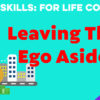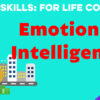In my ketogenic diet course: “Keto nutrition health coaching certification”, after receiving some very constructive feedback, it became clear that a segment on vegan ketogenic diet recipes were needed. If you have ever heard of the ketogenic lifestyle, you may know that it’s based on eating high amounts of healthy fats, medium level, protein-rich foods and low in carbohydrates. Most of the fat and protein consumed in the Ketogenic Diet is derived from lean meats, eggs, and other animal products. However, a diet high in animal proteins doesn’t work for everyone. Vegans cannot successfully do a ketogenic diet approach to health without some significant modification. There are several religions that either do not consume any animal based proteins, limited or restrictive consumption like only eating fish and dairy, or religious practices that require no animal protein for a given period of time. People who observe protein free and fasting periods could not maintain being in Ketosis, the desired goal of a Ketogenic diet, and so, without some additional guidance and vegan specific recipes, would not be successful in maintaining a Ketogenic lifestyle.
There are many other restrictions based on religious beliefs so we need to think about what other things we can do, in sales and marketing, to accommodate different faiths and beliefs? Religion is an important factor that good marketers and salespeople around the world take into consideration when creating their marketing and sales campaigns.
So, how does faith and religion influence our behavior, specifically our buying behavior?
There are world events connected to beliefs, faith and religion in which people come together, sharing a similar mission. And the united power of these groups it’s big, to the point where some scientists compare the old religious pilgrimages with modern events like a sporting event or a musical extravaganza, or a spiritual gathering, either virtual or in person.
Most religions have a story telling component. In the Old Testament, or the New Testament in the Christian world, or in the Torah, the Bhagavad Gita, or in the Koran, it seems that every religion is built upon a volume of stories and historical accounts. In some religious texts there can be hundreds if not thousands of stories, sometimes scary and sometimes miraculous. In most religions and systems of beliefs, rituals like praying, kneeling in a church, meditating, fasting, receiving the sacraments, singing specific songs, – they are all rooted in these stories upon which the specific faith was built.
Most religions have a clear vision and a clear mission, whether it’s to reach a certain spiritual goal or certain destination.
Most religions also strive to exert power over their enemies, or the non-believers. As we all know religious conflicts have been a part of world history throughout time, and we can all observe that many people are united just by simply taking sides against something, someone or some group of people that they don’t agree with. This unified front and the confidence that it provides, gives the believers in one faith the chance to express themselves and practice their faith by coming together with other fellow believers, often trying to convince others, the non-believers, to join them.
A commonality amongst many different religions – not all of them, but most – is to celebrate certain holidays and special occasions which brings about a shared feel and belief that something bigger than ourselves exists, that we are small in comparison to that. This type of celebration may not pertain to those religions which put an emphasis on modesty and austerity, however, even the most orthodox of all religions find ways to share a communal sense of belonging and faith. In some countries in Europe, or South America, or any other historically religion rich place in the world, you can witness that sense of faith and awe by seeing amazingly beautiful buildings with vaulted ceilings and beautiful paintings, sometimes plated with real gold and filled with precious stones and these are churches and cathedrals and monasteries. This opulence is like a kind of religious celebration. Often, when we enter these buildings, many of us can feel overwhelmed and without even thinking twice, we suddenly feel our own mortality and recognize that there is something greater than ourselves out there. Studies have shown that authorities and religions preserving the sense of grandeur do so out of the desire to articulate the believers’ sense of God as being all powerful, so much so that even to this day, in modern Italy, in Rome for example, no building it’s permitted to be raised higher than the Saint Peter’s cathedral. That cathedral is the center of religious culture and has been for many centuries. If we look around the world, let’s take Bangkok for example, we can see the splendor of the temple of the golden Buddha. The Buddha sits in the middle of the temple and is made from solid gold, weighing over 2 1/2 tons and is valued at nearly $200 million. Even more valuable is the symbolism that the temple presents to followers of the Buddhist faith and to the world.
Some religions, such as Christianity and the Muslim faiths share in common the concept of evangelism, which is the desire and the power to reach out and to secure new followers, by making people feel proud and honored to be members of that faith. Many other religions, such as Judaism, Buddhist and Hindi share the belief that their religions are only for those whose ancestors are born of the faith and anyone looking to convert, has to go through a vigorous period of learning in order to take that faith as their own.
Most religions also display symbols that represent their faiths. As some examples, the cross, a dove, an Angel, a crown of thorns are symbols of the Christian faith. The Star of David and the letter Chai , and a flame, are prominent symbols in the Jewish Faith. Symbols such as a book, a cup, the moon, and many more are shared between many religions.
Religions also have a sense of mystery about them, a sense of the unknown, which can be just as powerful as what we know or believe, if not even stronger, because the mystery creates curiosity in present and future followers and therefore it solidifies the faith and the growth of that specific belief system.
Earlier, we touched on similarities between religions and sporting events. Let’s take a look at what sports fans do in certain sporting events when their favorite team is playing. Do they have certain rituals? Do they wear certain symbols, certain colors, do they chant certain anthems to support their team? And if you ever are in a foreign country or a foreign city and you happen to meet a stranger who is wearing the colors and the symbols of your favorite team, are you not inclined to go say Hi and cheer in unison for that team? Can you recognize the deep sense of belonging, and perhaps even its profound influence on our behavior? Have you ever heard anyone saying that they participated in an event that brought people together, like a big soccer game, or a big concert, and, just like a religious pilgrimage, they described the event as more than just a few hours of entertainment, even going as far as calling it something similar to a spiritual or religious experience?
So, how does this all figure into sales and marketing in business?
Many scholars and businesspeople have noticed close similarities between world religions and businesses, as in they all have the same common elements they use to attract followers and clients.
Just like a successful religion, a successful business, a successful company has a clear vision and a clear mission, portraying a clear goal. Let’s look at Steve Jobs’ vision for Apple, which he made public back in the mid 1980s. When the company became publicly traded, Jobs said: “man is the creator of change in this world and as such he should be above systems and structures and not subordinate them”. Even decades later, with millions of IPods, iPhones, iPads and other Apple products sold, the company still pursues this same vision regardless of the fact that Steve Jobs is not here anymore.
Look at Coke versus Pepsi, Visa versus MasterCard, iPhone versus Android and many other direct brand competitions like these. This “us versus them” strategy attracts new fans, keeps the existing fans loyal, incites controversy and discussions, gets us thinking and of course arguing, but most importantly gets us buying into one brand belief or another, or simply buying products that they sell. Do you see any similarities with how the world’s religious leaders and churches keep their faithful followers and attempt to get more?
Products and brands evoke certain feelings and associations in our minds based on how they look, how they feel, how they smell. Those feelings and associations are much like how we feel, what we experience when we enter a church, a mosque, or any other place of worship. What all these experiences have in common is they all create in us, a sense of belonging.
How about storytelling itself? Can you identify how the most well-known successful world brands have stories behind them, connected to them that make us get emotionally involved? A prime example is Disney. Their use of relatable stories, vibrant colors, heroic and villainous characters, sounds, smells, music and the overall experience that Disney creates, is how the Disney Company can get you to feel emotionally connected to them.
Have you ever visited the Louis Vuitton flagship store in Paris, or Apple’s flagship store in New York? Have you ever visited the Duomo in Milano or any other impressive cathedrals in Europe? They are all designed and created to stir up certain emotions in us and create notions of extraordinary value and quality. Just like the magnificence of a beautiful cathedral makes us respect and admire God, the brands just noted generate similar awe and devotion.
What about the notion of evangelism and creating new followers?
When Google introduced its Gmail services for the first time, it attracted us in a very unique way by making the service very selective at first. You could join by invitation only, and therefore, made almost everybody else want to be part of it. This launch strategy helped Google to become the most popular virtual service in the world. The response and devotion made it almost like a virtual religion. When a friend invited you to join its ranks you felt as though you’d been welcomed to a semi- exclusive, lifelong community. The same strategy was used with the American Express card which was by invitation only and tens of thousands of consumers called up asking to be placed on the shortlist for their exclusive black card. The same when a new Iphone model is announced to be released soon, everybody who is somebody and who loves the iPhone starts pulling strings to get their hands on the new gadget first. How about Tesla and their months-long waiting lists for their new vehicles?
This feeling of getting something special and being part of some semi-secret group creates a sense of mystery and it creates in most people a deep desire to be part of that, even though, most of the time, people don’t even know what THAT really is. Let’s be honest, we wanted to have a Gmail account before we even knew what Gmail had to offer, compared to AOL, Netscape, Yahoo and all other existing email services at the time.
The impact of symbols:
How many people do you see happily wearing a t-shirt with the logo of your favorite sports team, in order to express your support for them, or wearing any clothing with your favorite brands logos, advertising for them, is emotionally very similar to wearing a cross pendant or other religious related symbols, in order to express our faith and our belief. So, you can see how symbols, stories, mystery and the other factors mentioned can have an extremely powerful impact on why we buy what we buy? Mystery – Is like knowing that for some, the fact that Coca-cola still has its recipe held secret, locked into a safe deposit box in an Atlanta bank, plays a role in why they prefer Coke vs Pepsi. It may not even be the actual taste. It may very well be the mystery that surrounds it and the brand loyalty that comes with that.
In conclusion, rituals, superstitions, religion and faith, whether we are aware of it or not, all contribute to what we think about the world around us. What we think about certain products that we see available on the market creates certain emotions in us, and therefore it influences our decision of buying or not buying those products.
This influence can be truly significant, almost like the influence of the church, or that religious leaders have on their faithful followers.
It has been documented that at mid 90’s Apple Inc macromedia conference, on the stage in front of 10,000 cheering Apple fans, Steve Jobs, the founder and CEO of Apple, made the announcement of the discontinuation of the Newton computers, and while he was saying the words, he picked up a Newton computer and he threw it into a garbage can a few feet away. The symbolism of his gesture, together with the words he said, were so strong, that in that moment it was clear to everybody present that the Newton line was finished. It had such a huge impact that almost many of those in the audience who had their own Newton computers with them, grabbed their computers and threw them to the floor and began stomping on them, like they had no value anymore.
Think about the power of that manifestation. What kind of CEO of what kind of company has that influence over 10,000 people in one moment? Isn’t this behavior similar to that of a zealous religious follower? We can see that just like in some religious organizations, and just like with devoted sports fans, loyal brand followers have a strong sense of belonging to a group or a team which has a clear mission, and a clear strong sense of unity to the cause.
Interesting Studies
Brain scan studies done in the early 2000s showed that there was no significant difference between the way people’s brains react to powerful brands and the way the brains react to religious icons and figures. This included scanning people’s brains in situations of exposure to favorite products: Apple, Lamborghini, Ferrari and others that most people associate with good quality and luxury, and it included brain scans of the same people exposed to their faith and religion, as they listened to religious music, or participated in a service of their faith. The results showed that the brain spots that got brighter during both the brand and religious stimulus were the same, as in identical, in both situations. The studies concluded that our emotional engagement with the significant brands that we love it’s very similar, almost identical, with our feelings about our faith and religion, and this is why marketers and advertisers have begun to use even more and more practices and ways from world religions to pursue their buyers. A good illustration of the bridge between brand and religious influence is that people buy actual buy holy land, as in dirt, coming in bags from Jerusalem, or holy water, which they believe is going to heal them if they ever fall ill. Not only to do companies actually sell these products for a profit, they are also infusing rituals and religion into the sale of their products and into the product themselves.
Even though studies have been able to prove that the marketing companies are using the same strategies as religious leaders use to create followers, many analysts agree that the use of these practices will typically not be admitted out loud, because using something as sacred as religion to create more followers for your own profit, can be perceived as immoral or unethical. But keep in mind that just because it’s not spoken of doesn’t mean it’s not happening.
A little homework for yourself would be to pay attention and try to identify similarities between religious rituals and strategies for attracting more religious followers and different commercial companies’ strategies of marketing and promoting their products and services. See what you come up with based on all the examples provided in this lecture. Then analyze both for fun and for your own benefit, to what extent do these practices overlap? Ask yourself, how does the practice of calling the faithful to a house of worship align with building a following for a certain brand.
Author: Sanda Kruger
Sanda is an entrepreneur, real estate investor, health coach and professional dancer. Sanda is an entrepreneur with more than 20-year experience in business development and project management in the fields of life, health and fitness coaching. She is also a real estate investor and a banker, who learned outstanding adapted business strategies, sales and marketing techniques, communication, and goal setting skills, hands-on, through life and work experiences. She is a certified fitness professional and is the creator of two original fitness programs, called BellyCore® Fitness and AquaCor®.








